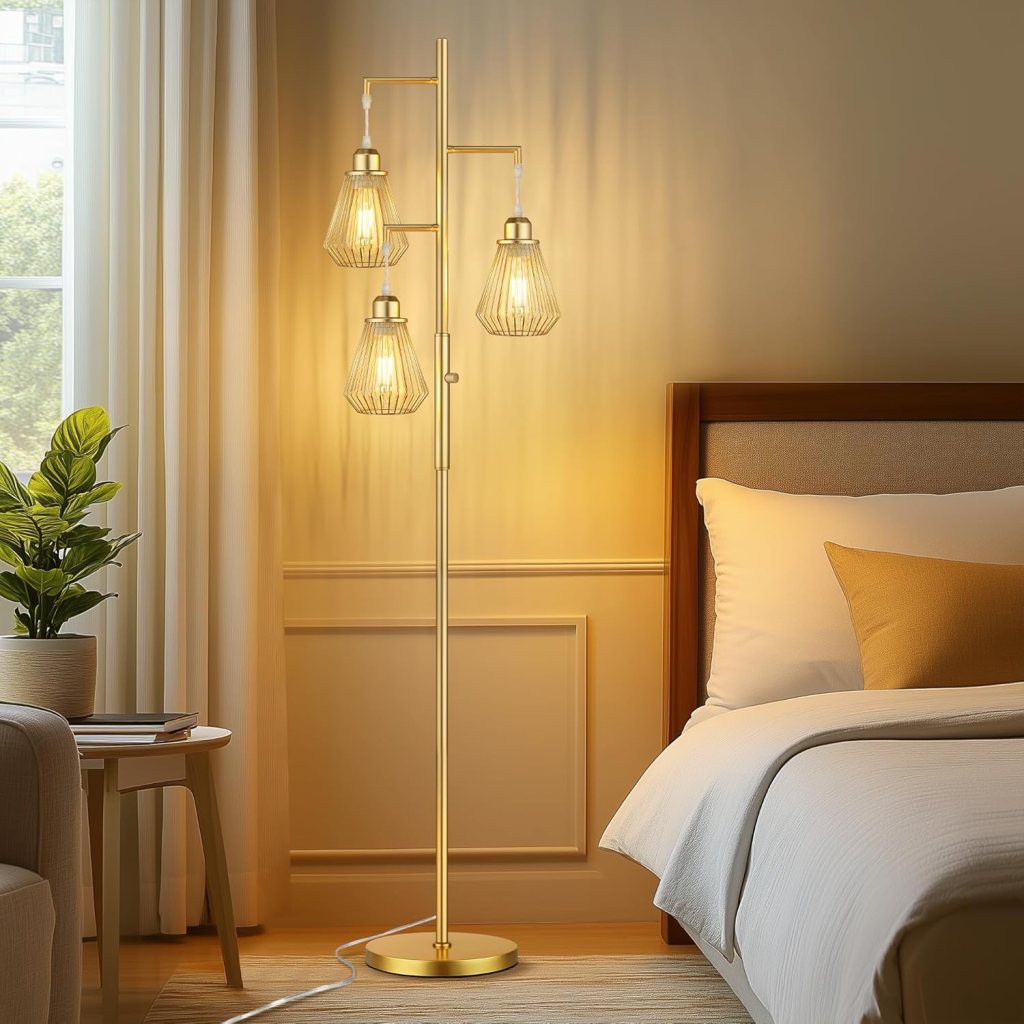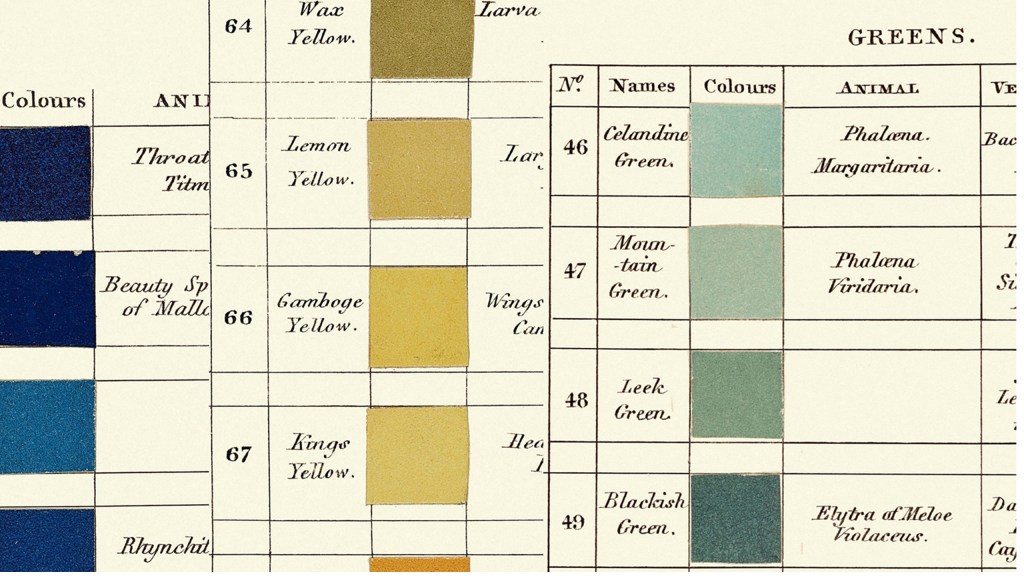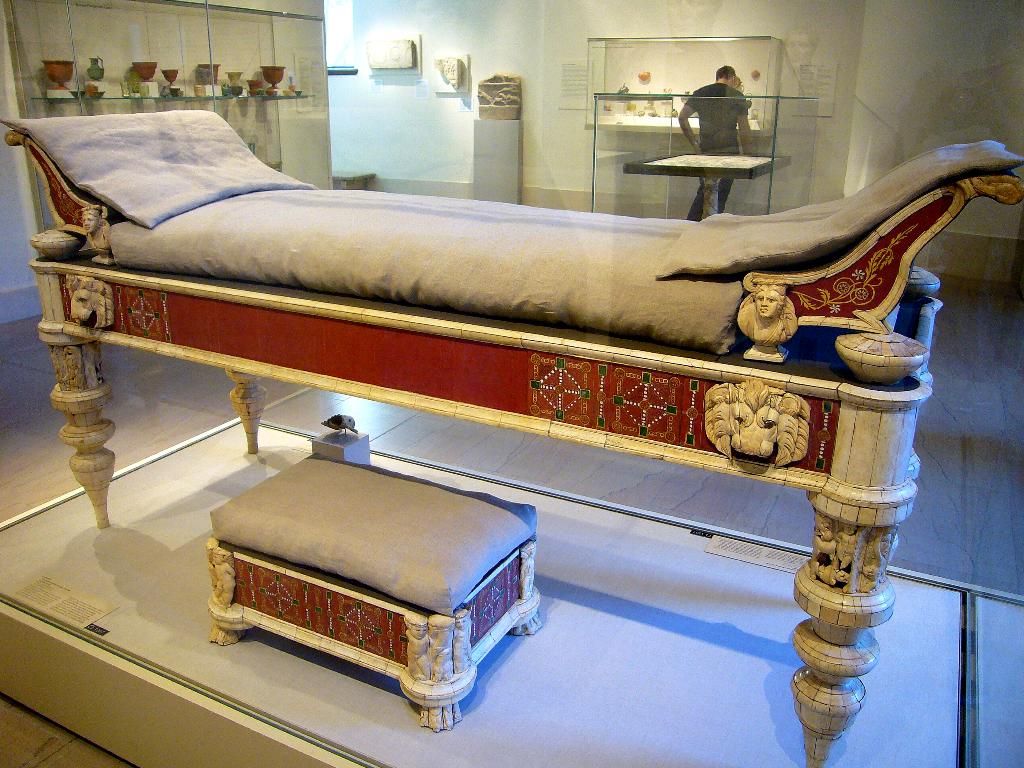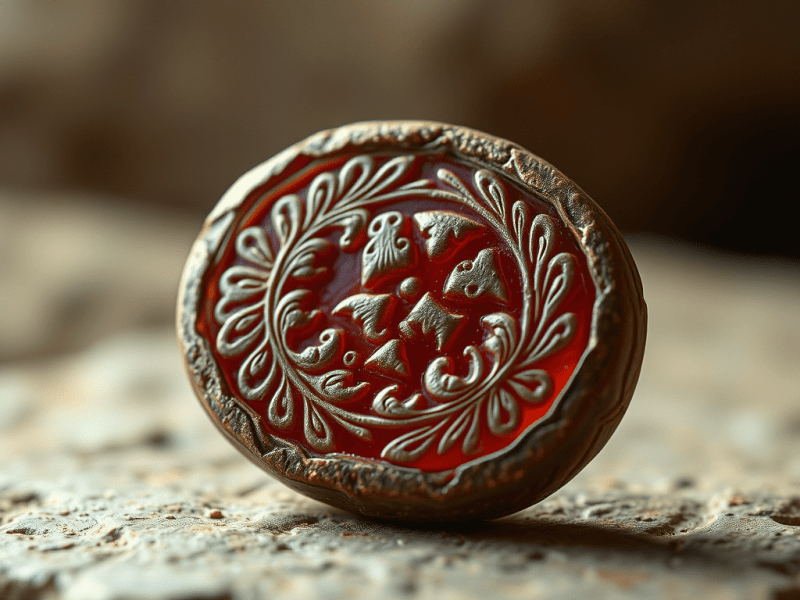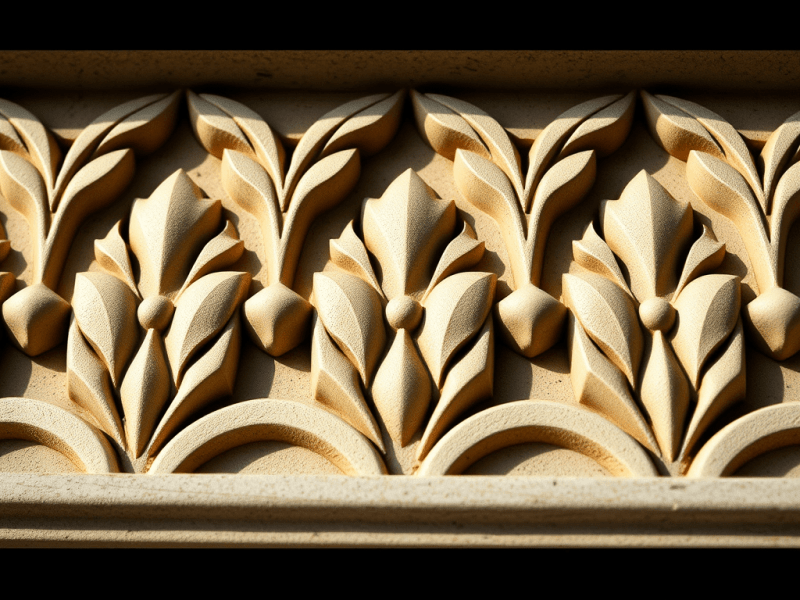
The Baroque period, sprawling from the late 16th century to the early 18th century, is a remarkable era in the history of applied and decorative arts. This period, rooted in Italy, swiftly spread across Europe, bringing a distinct style characterized by grandeur, rich detail, and a sense of movement and tension in design. The Baroque era’s influence on furniture, textiles, glass, metalwork, and interior design was profound, leaving a legacy that continues to inspire contemporary design.
Historical Perspective: The Emergence and Influence of Baroque
The Birth of Baroque: The Baroque period emerged as a reaction against the simple and precise rationality of the Renaissance. This era was marked by the Catholic Church’s desire to reassert itself after the Protestant Reformation. The arts, including decorative and applied arts, became a vehicle for this expression. The result was a style that aimed to awe and inspire through opulence and grandeur.
Cultural Expansion: The style quickly moved beyond Italy, finding unique expressions in countries like France, Spain, and the Netherlands. Each region adapted the Baroque ethos to its cultural context, resulting in a rich diversity within the style.
Critical Elements of Baroque in Decorative Arts
Dramatic Contrast: Baroque style is known for its dramatic use of light and dark, a technique known as chiaroscuro. This contrast was prevalent in painting and in the design of interiors and objects, where light played off intricate carvings and metallic finishes.
Ornamentation: Lavish ornamentation is a hallmark of the Baroque. This period’s furniture often features intricate marquetry, gilded accents, and elaborate carvings depicting scenes from mythology, nature, or religious iconography.
Materials and Textures: The Baroque era extensively used luxurious materials like velvet, silk, and brocades in textiles. Artisans used wood such as oak, walnut, and ebony in furniture, often inlaid with ivory or precious metals.
Form and Function: Baroque design emphasized aesthetics but did not overlook functionality. The era produced some of the most luxurious yet comfortable furniture, combining practicality with artistic expression.
Baroque’s Lasting Impact on Modern Design
Inspirational Legacy: Contemporary designers often draw inspiration from the Baroque’s rich palette and elaborate forms. The bold curves, ornate details, and dramatic contrasts in modern luxury interiors and objects show the style’s influence.
Adaptation in Modern Context: Today’s designers reinterpret Baroque elements, infusing them with a modern sensibility. This includes using Baroque motifs in more minimalistic ways or blending them with contemporary materials and techniques.
Source
Tate. (n.d.). Baroque – art term. Tate. Retrieved October 28, 2021, from https://www.tate.org.uk/art/art-terms/b/baroque.
More Design Terms
The Allure of Agate: History and Modern Uses
The agate cup in the V&A Museum illustrates the stone’s historical significance in art. Valued for beauty and versatility, agate inspires modern and traditional designs alike.
Keep readingExploring Italian Gothic Design: Art and Architecture
Italian Gothic architecture, flourishing from the 12th to 16th centuries, blends Northern influences with classical heritage, showcasing elaborate façades, functional furniture, and intricate decorative arts.
Keep readingExploring Lampblack in Decorative Arts
Lampblack powder, derived from soot, is a versatile black pigment widely used in inks, paints, calligraphy, and various decorative arts throughout history.
Keep readingThe Tarot: A Pictorial Journey in the Applied and Decorative Arts
The Tarot, a historical artistic and divinatory tool, blends pictorial design, symbolism, and craftsmanship, evolving through centuries while inspiring contemporary artistic expressions and storytelling.
Keep reading56 Ecclesiastical Art and Vestments Terms and Definitions
The content outlines various ecclesiastical vestments, sacred vessels, and art used in Christian traditions, detailing their functions and significance in religious ceremonies.
Keep readingThe Fitzhugh Pattern: A Classic Oriental Lowestoft Design
The Fitzhugh Pattern, a Chinese export porcelain design from 1815, features an American eagle and symbolizes U.S. trade, reflecting fascinating cultural exchanges in decorative arts.
Keep readingElectroplate and Electroplating: A Revolutionary Manufacturing Process
The evolution of electroplating by Elkington & Co. transformed affordable luxury in 19th-century home goods, enhancing craftsmanship and accessibility while influencing decorative arts production.
Keep readingTeardrop Cage: A Statement in Decorative Arts and Lighting
The Elegant Teardrop Industrial Style Lamp blends classic industrial design with modern utility, featuring a unique teardrop cage that enhances light diffusion and suits various interiors.
Keep readingExploring Janus: Symbolism in Architecture and Design
Janus, the Roman god of gates, doorways, transitions, and time, embodies the dual nature of beginnings and endings. His distinctive double-faced representation allowed him to look at the past. It also allowed him to look to the future. This made him an essential figure in Roman religious and civic life. His influence extends beyond mythology…
Keep readingGapestick a Historical Curiosity in Culinary Utensils
The gapestick, a large wooden cooking spoon from medieval kitchens, embodies humor and historical significance, illustrating its dual role in cooking and cultural language.
Keep readingThe Decorative Folding Screen: A Fusion of Art and Function in Interior Design
Folding screens, originating from ancient China, blend aesthetics and functionality in interior design, evolving into versatile room dividers and artistic statement pieces across cultures.
Keep readingThe Vibrant World of Gaudy Pottery: Dutch, Ironstone, and Welsh
The decorative arts showcase the Gaudy ceramics of the 19th century, highlighting three distinct styles—Gaudy Dutch, Gaudy Ironstone, and Gaudy Welsh—each representing cultural trends and artistic evolution.
Keep readingFlow Blue Ceramics: A Guide to This Iconic Tableware
Flow Blue ceramics are renowned for vibrant cobalt designs with blurred patterns. Produced mainly in 19th-century England, they are prized by collectors for their uniqueness and historical value.
Keep readingKey Features of Scandinavian Modernism
Scandinavian Modernism, emerging post-World War II, emphasizes functionality, natural materials, neutral colors, and light, promoting well-being and timeless design principles for accessible living spaces.
Keep readingExploring the Art of Majolica: A Glimpse into Vibrant Ceramic Tradition
Majolica is a vibrant pottery form that evolved from Moorish Spain to 19th-century England, cherished for its colorful designs, utility, and ongoing appeal among collectors and artists.
Keep readingThe Art of Émail Ombrant: A 19th-Century Decorative Revolution
Émail ombrant, a 19th-century pottery technique, uses colored glaze to create depth and sophistication, reflecting artistic innovation and natural motifs, captivating collectors worldwide.
Keep readingThe Evolution of the Picture Frame: From Ornament to Minimalism
The picture frame has evolved from ornate, integrated designs to minimalist styles, reflecting artistic trends and technological advancements, adapting to contemporary tastes while preserving artworks.
Keep readingThe Alabastron: A Dual-purpose Vessel of Ancient Greece
The alabastron is a small, elegantly designed ancient Greek vessel for holding ointments and perfumes, reflecting both practicality and artistic excellence in daily life and rituals.
Keep readingNeoplasticism: The Geometry of Purity in Art and Design
Neoplasticism, founded by Piet Mondrian and Theo van Doesburg in 1917, sought universal visual language through geometric abstraction, primary colors, and a minimalist aesthetic, influencing modern design.
Keep readingChiaroscuro: The Art of Light and Shadow in Design
Chiaroscuro, originating during the Renaissance, emphasizes light and shadow to enhance depth across various artistic fields, influencing aesthetics, mood, and spatial awareness.
Keep readingThe Artistic Legacy of Snuff Boxes: 18th and 19th Century Treasures
Snuff boxes, once status symbols crafted from luxurious materials, evolved into decorative art pieces, reflecting cultural values and personal identity, despite declining popularity by the late 19th century.
Keep readingNieuwe Kunst: The Dutch Art Nouveau Movement
Nieuwe Kunst, a Dutch Art Nouveau movement, emphasized geometric patterns, functionality, and the merging of fine arts with practicality, influencing later design movements like De Stijl.
Keep readingBrocade Weaving: History and Techniques Explained
Brocade is an intricate fabric with a rich history, originating in ancient China and evolving through cultures, known for luxury, complex patterns, and modern applications in fashion.
Keep readingUnderstanding Critical and Inclusive Design Approaches
The design world embraces innovative concepts like critical design, inclusive design, and resonant design, emphasizing thoughtful questioning, user participation, and addressing diverse needs among all populations.
Keep readingThe Impact of Werner’s Nomenclature on Design
Werner’s Nomenclature of Colours, published in 1814, standardized colour classification using nature, influencing 19th-century science and art, and paving the way for modern colour systems.
Keep readingThe History and Impact of Chintz Fabric in Decorative Arts
Chintz fabric, originating in 16th-century India, has profoundly impacted decorative arts and fashion, known for its vibrant patterns and resurgence in modern design trends.
Keep readingUnderstanding Tambour Doors: A Historical Overview
The Amish Roll Top Desk features tambour doors, which are flexible wooden slats allowing seamless concealment of storage, optimizing space while enhancing aesthetic appeal in furniture design.
Keep readingRoman Lectus: The Ancient Couch That Defined Luxury & Modern Design
The lectus was a multifunctional Roman furniture piece, evolving from the Greek klinē, featuring comforts like headrests, ornamentation, and resembling modern couches in design.
Keep readingUnderstanding Stoneware: Composition and Characteristics
Stoneware is a durable, high-fired ceramic originating from ancient Mesopotamia, with significance in various cultures. Its versatility and glazing techniques enable diverse functional and decorative uses.
Keep readingBenefits of Vintage Industrial Stacking Chairs
Vintage industrial stacking chairs by Cox & co are lightweight, durable, space-saving seats, eco-friendly in design, ideal for flexible seating arrangements in various environments.
Keep readingThe Caduceus: Historical Symbolism and Cultural Significance
The caduceus, symbolizing Mercury, features two serpent figures, signifying communication and mediation, and has historical ties to authority, peace, and decorative arts.
Keep readingVesica Piscis: Sacred Symbolism in Christian Art and Gothic Architecture
The vesica piscis, a symbol in Christian art, frames sacred figures in architecture, stained glass, and seals, representing sanctity and divine protection within Gothic designs.
Keep readingMonteith: The Chilling Bowl of English Elegance
The Monteith, a decorative bowl with a scalloped rim, evolved from silver to earthenware, serving as a centerpiece for social gatherings and reflecting English artistry and customs.
Keep readingMirror Black: The Lustrous Black Glaze of K’ang Hsi Ceramics
Mirror Black Glaze, from the Qing Dynasty’s K’ang Hsi period, features a reflective quality with rich colors, showcasing skilled craftsmanship in Chinese porcelain art.
Keep readingThe Vase: Symbolism, History, and Decorative Use in Art and Architecture
Vases hold significant symbolic and functional roles throughout history, reflecting beliefs, traditions, and artistic styles, evolving from essential domestic tools to decorative art pieces.
Keep readingJapanese Fret: A Unique Geometric Motif in Traditional Japanese Art
The Japanese fret is a distinctive geometric pattern in art, appreciated for its irregular style, versatility, and cultural significance, influencing both traditional and modern design.
Keep readingIvy in Ancient Art and Architecture: Symbolism and Decoration
Ivy, significant in ancient cultures, symbolized Dionysus, friendship, and fidelity, adorning art and architecture while influencing decorative designs throughout history.
Keep readingImbrication: The Art of Overlapping Patterns in Architecture
Imbrication is a roofing technique involving overlapping tiles, enhancing water drainage and durability. It evolved into decorative ornamentation in Norman and Romanesque architecture, enriching aesthetics significantly.
Keep readingJardinière Velvet: Luxurious Silk Velvet for Elegant Interiors
Jardinière velvet is a luxurious fabric featuring vibrant floral patterns on a light background, ideal for elegant upholstery and drapery in high-end interiors.
Keep readingIntaglio: The Ancient Art of Engraving
Intaglio is an ancient engraving technique where designs are carved below the surface, historically used for seals and jewelry, influencing art and craftsmanship today.
Keep readingChristian Iconography: Influencing Decorative Arts Worldwide
Christian iconography has influenced art across cultures and time periods. It integrated local elements, spread through folk art, showed complex techniques, embodied symbolism, and reflected gender dynamics.
Keep readingRefined Simplicity: The Art of Minimalism in Decorative Design
Minimalism in decorative arts emphasizes simplicity, functionality, and high-quality materials, using clean lines, neutral colors, and space to create uncluttered, purposeful interiors and objects.
Keep readingThe Legacy of Lead Glaze: Beauty, Function, and Health
Lead glaze is a historical ceramic glaze using lead oxide for vibrant colors, durability, and glossy finish, but its health risks have led to safer alternatives.
Keep readingTortoiseshell in Decorative Arts: Luxury Material
Tortoiseshell, derived from hawksbill turtle shells, is prized for its rich appearance. Once used in luxury goods, its use is now restricted due to conservation efforts.
Keep readingEgg and Tongue: Timeless Patterns in Ancient Architecture
The egg and tongue motif, originating in Greek Ionic architecture, symbolizes life and protection, evolving through Roman to modern designs, demonstrating enduring aesthetic and cultural significance.
Keep readingExploring Kitsch Design: Sentimentality, Garishness, and Mass Production
Kitsch design, known for its sentimental, garish, mass-produced nature, prompts both ironic and genuine appreciation. Its impact on culture and design is enduring.
Keep readingThe Evolution of the Desk: A Decorative Arts Perspective
Desks have evolved from sloping surfaces to modern ergonomic designs, reflecting the intersection of functionality and artistic craftsmanship over centuries. Notable historical examples illustrate this evolution.
Keep readingDiscover the Elegance of Acajou Moucheté: A Timeless Treasure in Decorative Arts
Acajou Moucheté, a prized mahogany with mottled grain, is used in high-end furniture, veneer, musical instruments, and interior design with a focus on sustainability.
Keep readingThe Exquisite Art of Porcelain: Crafting Delicate Elegance
Porcelain is a remarkable ceramic material known for its hardness, delicacy, and characteristic translucence. Often associated with an elegant and refined appearance, porcelain has been a staple in decorative arts for centuries, prized for its durability and its ability to showcase intricate designs. What is Porcelain? Porcelain is typically white and is made by heating…
Keep readingWhat is Haute Couture?
Haute Couture, stemming from mid-19th century Paris, emphasizes exclusivity, meticulous craftsmanship, luxurious materials, and innovative design. Today, it symbolizes luxury and artistry.
Keep readingThe Art and Craft of Sword Hilts
Sword hilts are intricate, functional artworks reflecting craftsmanship, culture, and history. They evolved significantly from the 16th to 17th centuries, exemplified by the rapier ca. 1590.
Keep readingMouchette in Gothic Revival Metalwork
The mouchette motif, prominent in Gothic architecture, played a vital role in the Gothic Revival movement, symbolizing a return to medieval craftsmanship and spiritual values.
Keep readingLunettes: The Crescent Charm from Architectural Wonder to Decorative Delight
A lunette is a semi-circular window space and decorative motif popular in the Italian Renaissance and Jacobean era, often seen in furniture design.
Keep readingThe Meaning of Tôle in Classical Furniture and Decor
Tôle, a type of sheet metal, was commonly used in furniture-making during the French Empire, particularly in lanterns and vases. Italy and Spain also favored tôle items.
Keep readingElegance of Quatrefoils: The Timeless Four-Leaf Motif in Gothic Architecture
The quatrefoil, or “four leaf,” motif features in Gothic architecture’s tracery, seen in friezes within Perpendicular and Decorated styles. It’s divided into four leaves or lobes.
Keep readingSalver a 17 Century Tray or Plate – Design Dictionary
The history and significance of salvers, from their 17th-century origins serving noble households to their modern ceremonial and decorative applications, showcase their enduring elegance and utility.
Keep readingEmbracing Symmetry and Heritage: The Art of Addorsed in Design
The term ‘Addorsed’ represents a historical design arrangement symbolizing balance and unity. It is employed in architecture, heraldry, and modern design for visual appeal and narrative complexity.
Keep readingFrench Polishing: A Gleaming Controversy in Furniture Making
French polishing, introduced in the late 18th century, revolutionized furniture finishing. This controversial technique, despite criticism, remains cherished for its unique aesthetic.
Keep readingElegance Reclined: The Timeless Journey of the Chaise Longue in Design
The chaise longue, or “long chair,” embodies aesthetics, function, and comfort. Its rich history and evolution reflect timeless design and enduring appeal.
Keep readingIntroduction to Bonkei: The Art of Miniature Landscapes
Bonkei, a Japanese art form, captures nature’s essence using dry materials. Rooted in history, it emphasizes balance, natural beauty, and reflects Zen philosophy. Appreciated globally.
Keep readingGolden Illusion: The Art and Alchemy of Prince Rupert’s Metal
Prince Rupert’s metal, a brass alloy with 60-85% copper and 15-40% zinc, resembles gold but is more affordable. It’s popular for jewelry and decorative arts.
Keep readingMuffineers: The Elegant Art of Dining in the 18th and 19th Centuries
Muffineers, popular in the 18th and 19th centuries, reflect dining customs and artistic trends. Their historical, design, and collectible significance endures today.
Keep readingEmbracing Elegance: The Timeless Appeal of Pearwood
Pearwood, derived from the European pear tree, is valued for its warmth, fine grain, versatility, and historical significance in decorative arts.
Keep readingUnveiling the Gothic: A Journey Through Time and Design
Gothic design, with its origins deeply entrenched in the rich soil of history, represents a profound evolution in the world of art and architecture. This blog post embarks on a detailed exploration of Gothic design, tracing its roots, examining its distinctive features, and understanding its lasting impact on the decorative and applied arts. By delving…
Keep readingExploring the Art and Science of Glazes in Ceramics
Ceramic glazing, spanning millennia, combines art and functionality. From ancient techniques to modern sustainability, its rich history reflects human creativity.
Keep readingThe Art and Science of Mordant: Bridging Colors and Fibers
Mordants, from the Latin “to bite,” are crucial in natural dyeing, forming permanent, vibrant colors. They enhance textile design, history, and sustainability.
Keep readingThe Luminous Craft of Enamelwork: A Journey Through Time and Technique
Enamelwork, a fusion of art and science, has a rich history from ancient civilizations to modern applications, blending traditional techniques with innovative materials.
Keep readingExploring the Elegance of Fête Galante
The Fête Galante genre of 18th-century French art, exemplified by Pierre-Antoine Quillard’s work, continues to inspire modern design with its timeless principles of balance and harmony.
Keep readingThe Timeless Appeal of Earthenware: A Historical Overview
Earthenware, an ancient material for decorative and functional items, evolved through history, blending tradition with modernity, reflecting human creativity and design principles.
Keep readingFestoon: A Timeless Motif in Decorative Arts
Festoons, symbolic of abundance and festivity, have graced art and design for centuries. Their enduring appeal continues to inspire contemporary creations.
Keep readingIntroduction to the Caquetoire Chair: A Historical and Design Perspective
The caquetoire chair, originating in France during the Renaissance, reflects social dynamics and gender roles while accommodating evolving fashion and facilitating leisurely conversation.
Keep readingThe Evolution and Design of the Knife: A Testament to Practical Artistry
Explore the design of the knife. Its aesthetics, versatility and cultural influences have shaped human history.
Keep readingJapanning: A Blend of Cultures in Decorative Arts
West meets East with Japanning. Learn how this art form combines Asian aesthetics and Western crafting techniques with European adoration of 17th century lacquerwork.
Keep readingThe Jacquard Mechanism: A Revolution in Textile Design
The Jacquard loom at the National Museum of Scotland exemplifies a blend of creativity and engineering, revolutionizing textile design with intricate patterns and leaving a lasting impact.
Keep readingThe Journey of Delftware: From Eastern Origin to European Classic
Delftware, originating in Netherlands, was influenced by Eastern porcelain, pioneered by Dutch East India Company, and later adopted and adapted by English artisans.
Keep readingMaiolica Tin-glazed Earthenware, a Product of the Renaissance
Maiolica, tin-glazed earthenware from Italian Renaissance, featured vivid istoriato designs influenced by prints. Flourished in major pottery regions, then replaced by porcelain.
Keep readingGesamtkunstwerk – Complete Art Work
Gesamtkunstwerk is a 19th-century German concept that unifies various art forms into a single work. Richard Wagner popularized it through his opera cycle “The Ring of the Nibelung,”
Keep readingSuprematism Russian Abstract Art & Design Style
Suprematism, a non-objective art style, was developed by Kasimir Malevich in 1915. It replaced conventional obsession with human face and natural objects with modern symbols. Influenced by artists like El Lissitzky, Suprematism influenced the Bauhaus school and the Constructivist movement in Russia.
Keep readingThe Art of Kakemono: The Elegance of Japanese Hanging Scrolls
Through the lens of Kakemono, we not only appreciate Japanese artistry but also understand the underpinnings of the culture that has given birth to it. The fluidity and grace of these hanging scrolls stand testament to the rich tapestry of Japan’s historical and artistic legacy.
Keep readingCameo Incrustation: The Art of Porcelain and Glass through Time
Cameo Incrustation combines porcelain and glass, creating a silvery appearance. Originating in France, it gained recognition in Britain and continues at Ford’s Glasshouse.
Keep readingExploring the Glasgow School of Art: A Historical Overview
The term “Glasgow School” refers to influential groups of artists in Glasgow, from the 1880s and into the 20th century, shaping Scottish art.
Keep readingUse of the Airbrush in Industrial Design
Explore the rich history and usage of the airbrush in industrial design, tracing its impact from pioneers like Raymond Loewy to contemporary practices. Learn how the airbrush, with its ability to deliver precisely controlled sprays of paint or ink, revolutionized automobile styling and product design, providing a tangible, realistic representation of ideas. Despite the advent…
Keep readingBiomorphism: A Fusion of Nature and Design
Biomorphism, an art movement inspired by natural forms, influenced design in the 20th century. It blended organic shapes with modern materials, leaving a lasting impact on art and architecture.
Keep readingThe Alhambra Table Fountain: A Majestic Shrine of Elegance and History
The Alhambra Table Fountain, created in 1852-1853, embodies Moorish art and Victorian aesthetics, showcased through intricate design, symbolism, and its historical journey.
Keep readingThe Anatomy of a Hallmark: Insights into Authenticity and Value
A hallmark is a symbol or device struck at an assay office on gold or silver, indicating that article conforms to legal standards of manufacture established by the monarch, local guilds, government etc. Literally, mark applied at Goldsmith’s Hall (London assay office since 1300) but extended to cover e.g. all five stamps found on Victorian…
Keep readingEverything Old is New Again – Glass-Making Techniques
Manufacturers and designers recreated some ancient Egyptian and Roman glassmaking processes in the early 20th century.
Keep readingChromium: Transforming the Decorative and Applied Arts for Over 150 Years
Chromium has been a game-changer in the decorative and applied arts for over 150 years. This versatile metal, known for its lustrous appearance, has revolutionized design in various mediums. From furniture and automobiles to ceramics and gemstones, chromium’s impact is undeniable. Its reflective properties and corrosion resistance make it ideal for creating striking metallic finishes.…
Keep readingUnveiling the Beauty of Silvered Glass: A Historic Technique with a Modern Twist
Silvered glass, invented by F. Hale Thompson in 1849, revolutionized glassmaking with its unique double-walled technique, inspiring artisans across Europe to create exquisite variations.
Keep readingSlipware Pottery – What is it?
Slipware is pottery known by its primary decorating method in which slip is added before firing by dipping, painting or splashing on the leather-hard clay body surface. Slip is an aqueous clay body suspension that is a combination of clays and other minerals, such as quartz, feldspar, and mica.
Keep readingJaponisme – a French interpretation of a Japanese aesthetic
A French term used to describe a variety of European borrowings from Japanese art was Japonisme.
With the opening of trade with Japan following the expedition of the American Commodore Matthew Perry in 1853. The interest in Japanese art in the West, particularly in France, had started to develop. The artist Félix Bracquemond, a friend…
Keep readingNeon Lighting – Dictionary – Design Term
Neon Lighting. Semiflexible, hollow tubes of clear acrylic with small bulbs inside that can be connected to light up all at once or sequentially to produce a “chasing” effect. It’s also known as disco lighting, and it’s given homeowners new illumination alternatives. Lights designers consider neon lighting to be an art form.
Keep readingAffichiste French for Poster Designer
Affichiste. Name (literally ‘poster designer’) taken by the French artists and photographers Raymond Hains (1926-) and Jacques de la Villeglé (1926-), who met in 1949 and created a technique to create collages from pieces of torn-down posters during the early 1950s. These works, which they displayed for the first time in 1957, were called affiches…
Keep readingShaker Style of Furniture – Simplicity and Functionality
The Shaker furniture style is characterised by simplicity and functionality, made from high-quality materials and features clean lines and minimal ornamentation. It fell out of favour in the early twentieth century but is now appreciated for its timeless elegance and practicality.
Keep readingJenny Lind Style: From 19th Century to Modern Interiors
Spool beds, known as Jenny Lind Style, feature intricately turned spindles resembling spools. Once popular, now a relic, still prized by antique collectors.
Keep readingLithography Don’t Show the Trick, Show the MAGIC
A method of printing from a design drawn directly on a slab of stone or other suitable material. The design is not raised in relief as in woodcut or incised as in line engraving, but drawn on a smooth printing surface. Initially, this surface was provided with a slab of unique limestone, but metal (usually…
Keep readingRegency Tankard – Intricate Low Relief
Regency tankards, crafted in England between 1811-1820, showcase intricate low-relief figures, making them valued collectibles representing historical artistry and conversation pieces.
Keep readingThe Enduring Legacy of Wrought Iron in Design and Architecture
The term “wrought iron” refers to the material rather than the products made of iron. Modern mild steel has supplanted wrought iron, a forgeable ferrous material used up until about the middle of the twentieth century. Because of the extensive forming required during its production—under power hammers and through rollers—it was originally referred to as…
Keep readingBrandewijnskom – Brandy Bowls for Birth Ceremonies
The brandy bowls, produced in 17th and 18th century Holland and Friesland, were used in childbirth ceremonies. This silver example showcases detailed engraving and religious iconography.
Keep readingA Quaich: An Early Form of the Loving Cup
The quaich is a traditional Scottish drinking vessel with two handles, used mainly during ceremonies. It symbolizes unity and incorporates unique customs like “kissing the quaich.”
Keep readingJardiniere Ornamental Stand Definition and Meaning
A jardinière is an ornamental plant holder that originated in the 1760s, evolving through Japanese influences, and remains popular today for enhancing interior and exterior spaces.
Keep readingRelated Articles
Discover more from Encyclopedia of Design
Subscribe to get the latest posts sent to your email.







